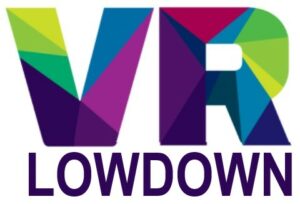TrackIR is a popular input device for tracking head movements in a wide range of simulation games and is particularly popular with racing and flight simulator enthusiasts. Over recent years, virtual reality headsets have been providing an increasingly viable alternative, and the TrackIR vs VR debate is now very much in play. This article is going to discuss the pros and cons of both TrackIR and VR headsets to help you decide which is the best option for you.
I have considerable experience in using TrackIR in a range of simulation games for about 15 years, and am also a VR enthusiast who has been using VR headsets since 2016. There are good reasons why you may pick one over the other, and I hope to provide a balanced comparison of these two different technologies.
VR headsets are more immersive and provide 1-to-1 head tracking, but have lower visual clarity, are more expensive, and prevent you from seeing the real-world. TrackIR works well, is relatively inexpensive, easy to set up, but lacks immersion, and uses motion scaling, which can feel unnatural.
Let’s look at each aspect of TrackIR and virtual reality to help you decide which is the better option for your situation.
TrackIR
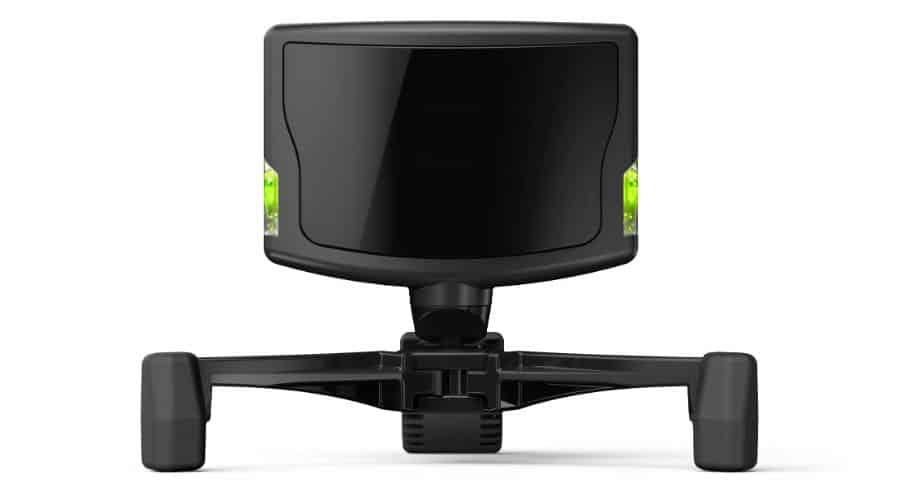
TrackIR is a computer input device that enables 6DOF head tracking without needing anything other than your head movements to control this. It is incredibly useful to use when playing driving and flight simulators, allowing you to look around you easily, and gain a greater awareness of your surroundings.
With motion scaling, I can make relatively small movements of my head and see right the way around me while keeping my eyes fixed on the monitor. I have used TrackIR for years to play flight and racing simulators, and it has always made such a difference to both my enjoyment and ability to perform well in these types of simulators.
TrackIR is easy to set up and comes with an infrared camera that attaches to the top of your monitor, and a Trackclip that attaches to a cap or audio headset that the camera is able to track and determine your exact head position.
VR Headsets
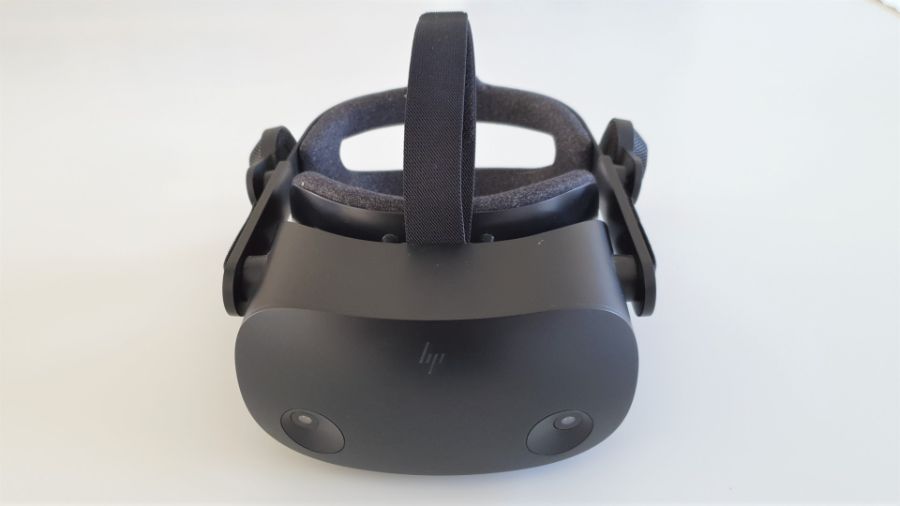
The other option to achieve accurate head tracking in simulation games is to use a VR headset. Most modern headsets provide extremely accurate 1-to-1 head tracking through 6 degrees of freedom, allowing you to look around your environment in an incredibly realistic way.
They have the added benefit of making you feel that you are inside the game you are playing, rather than just looking at it on a screen. However, the technology is still developing, and there are a number of drawbacks that we are going to cover.
Immersion
If you want to create as immersive an experience as possible, VR is the clear winner as it provides an incredible experience that gaming on a monitor cannot come close to matching. VR makes you feel like you are actually inside the game you are playing, really sitting in the car or aircraft, providing an immense sense of presence.
It’s hard to express just what VR feels like, as you can’t really demonstrate it by watching a video or reading about VR. All I can say is that if you want to have an immersive experience, as well as have excellent head tracking while you play, VR is the clear winner.
Having said that, there will be many people who really don’t want to be entirely enclosed in VR, as there are advantages of being able to see the real world while you play, such as being able to see your real-world controls and being able to interact with people or things outside of the game much more easily.
Visual Clarity Of TrackIR Vs VR Headsets
One of the problems with VR until recently has been the reduced visual clarity compared to a large high-resolution monitor, or even a triple-monitor setup. Most VR headsets released before 2020 provided slightly pixelated, blurry visuals that, whilst great for immersion, prevented you from being able to read text clearly or see small objects at distance.
Modern headsets, such as the HP Reverb G2 have greatly improved the visual clarity you can experience, thanks to higher resolution panels and better lenses, and most things look pretty clear. However, we are still a long way off from having a level of clarity that is as good as 20/20 vision in real life. For this, VR headsets would need to achieve approximately 60 pixels per degree (PPD) of horizontal vision, compared to approx 22 PPD for the HP Reverb G2.
In contrast, a large 4K monitor placed at a regular distance from your face on a desk provides close to 60 PPD, meaning things are about as clear as they can be. If you play games where seeing small things on the horizon, or reading small text at a medium distance are crucially important, TrackIR will still provide better performance. However, VR headsets are likely to be able to match this performance in the next few years.
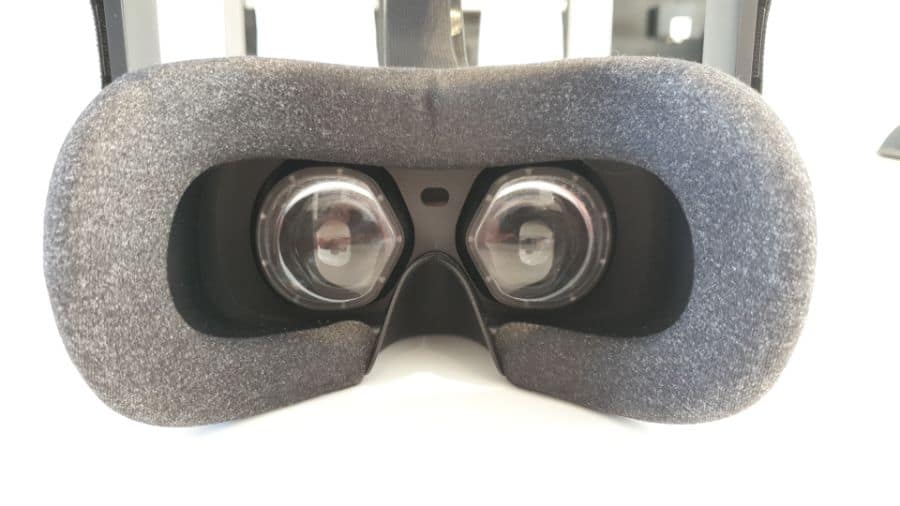
Tracking Accuracy
TrackIR generally works well, tracking head movements with no noticeable lag and great accuracy. The TrackIR software lets you adjust the range, speed, and sensitivity of the tracking to your liking and is easy to use. However, the TrackIR camera only has a field of view of 51.7 degrees, so if you do move your head outside of this, tracking will be lost.
Most modern VR headsets track head movement flawlessly. I currently use the HP Reverb G2 for most of my VR simulation gaming, and the 1-to-1 tracking is completely flawless and without any noticeable lag. One thing to bear in mind is that in VR you must look right over your shoulder to look behind you, whereas with TrackIR, you can customize the motion scaling so you only have to turn a small amount to see right behind you.
Cost Of TrackIR Compared To Virtual Reality
One of the major drawbacks of VR is the cost associated with it. Most simulation games are graphically demanding, so you are going to need a powerful gaming PC that could potentially cost a lot, in addition to a VR headset, which normally starts at about $500. For reference, my gaming PC cost about $3000 and I spent a further $600 on the HP Reverb G2.
Virtual reality is typically much more demanding than playing the same game or simulator on a flat monitor, so you will need much better hardware to achieve the same level of performance, or you will have to settle for lower graphics.
TrackIR 5 currently costs $149.95 and the TrackClip Pro costs $34.95, and TrackIR has only a modest impact on the performance of your computer. If your current computer can play the games you want to play with good performance, you are very unlikely to need an upgrade if you opt for TrackIR. The same cannot be said of VR, which was the primary reason why I upgraded my PC recently.
Ability To See Surroundings
One drawback of VR is the inability to see your surroundings outside of VR. When flying the UH-1H Huey, (my favorite helicopter) in DCS, I can’t see my Thrustmaster Warthog HOTAS, and I must use the controls by feel. Whilst I know where everything is, there are some times when I need to press buttons on the keyboard, and it’s impossible to do this with the headset on, and it’s really cumbersome to have to lift my headset up every now and then to see the keyboard.
With TrackIR, there are no issues seeing my surroundings, as all the action happens on the screen, so I still have a full view of my controls. If my phone rings I can answer it, and if my wife comes in to say hello, it’s much easier to speak to her, rather than having to take my VR headset off.
Motion Scaling
There are pros and cons of the motion scaling that comes with TrackIR. This lets you see right behind you with a relatively small movement of your head, but doesn’t ever really feel natural, and does take a while to get used to. I also find that I can get a bit of eye strain at times, as I need to continually move my eyes to keep looking at the screen, despite turning my head to look around.
In VR, as your head movement is tracked 1-to-1, it feels really natural, and as the screen moves with the headset, you are generally always looking straight ahead. The downside is that you need to turn your head right around to see behind you, which can be a little tiresome.
Hardware And Performance
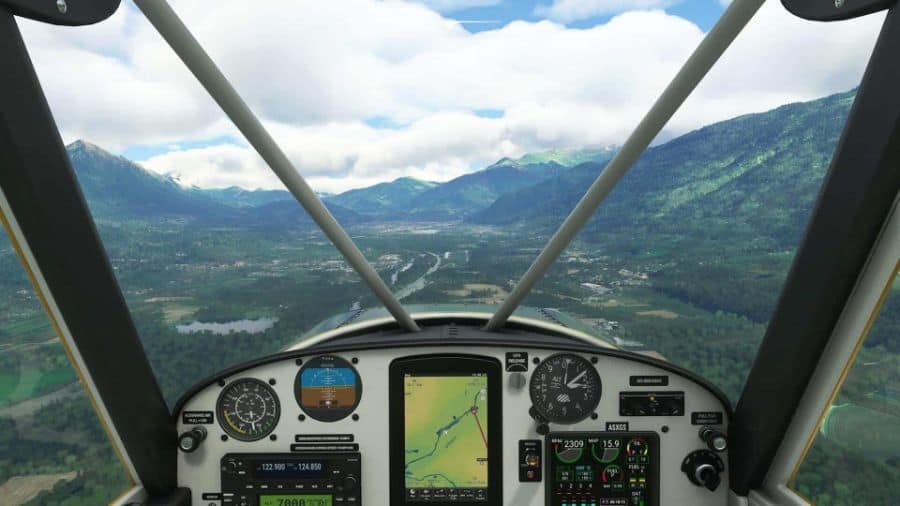
VR is highly demanding on PC hardware, and games such as Microsoft Flight Simulator and DCS can bring even a powerful gaming PC to its knees. I currently have a Ryzen 5800X processor, 16GB RAM, and an NVIDIA Geforce RTX 3090, and even with this, I need to turn some graphics settings down in both of these games to achieve good performance in VR.
If you already have to balance the graphics settings to maintain a good frame rate in your games, you probably shouldn’t consider getting a VR headset, unless you are planning to upgrade your computer.
This is due to many modern VR headsets having to drive high-resolution panels at high frame rates. For example, the HP Reverb G2 has to process more pixels per second than a 4K monitor, and you generally need to run it at a higher frame rate than a monitor for it to be a comfortable experience.
Comfort Of TrackIR Vs VR
While VR headsets have become increasingly comfortable over the last few years, they are still not as comfortable as looking at a screen while wearing the TrackIR TrackClip. Even a well-balanced, comfortable VR headset will start to get a little uncomfortable after a few hours, and some games can make you feel a little nauseous after a while, depending on how sensitive you are to motion sickness.
Another thing to bear in mind is that it can get warm wearing a VR headset. The headset itself will get warm while in use, and during hot summer days, you can get really hot after a VR gaming session. This has put me off using my VR headsets during heat waves in the middle of summer.
I think comfort is something that most VR headset manufacturers are concentrating on a lot now, ensuring that the facial interface and head strap are well designed and comfortable and that the headset is well balanced, to prevent it from putting excessive pressure on your face. I can comfortably use my Reverb G2 for many hours at a time without any comfort issues or eye strain, but this is not the case for everyone who uses VR headsets.
The only comfort issue that I have experienced while using TrackIR is some eye strain after a while due to having to keep my eyes focused on the screen while moving my head to look around the cockpit.
TrackIR Vs VR: Which Is Better?
The answer to this question depends on what aspects are most important to you. Now that VR headsets provide sufficiently clear visuals, I find that the immersion of VR outweighs the other negative points for me. The feeling that I am actually sitting in a car or flying a plane is so amazing and profound, that going back to flat screen gaming just doesn’t have the same appeal.
However, if you are looking for a relatively inexpensive way of adding 6DOF head tracking to your games, TrackIR is still a fantastic solution. It is simple to set up, easy to use, relatively affordable and works extremely well.
Whilst most people I speak to who have made the switch from TrackIR to a virtual reality headset don’t regret making the move, this is not the case for everyone, and there are some people who will find TrackIR to be better for them and their situation.
